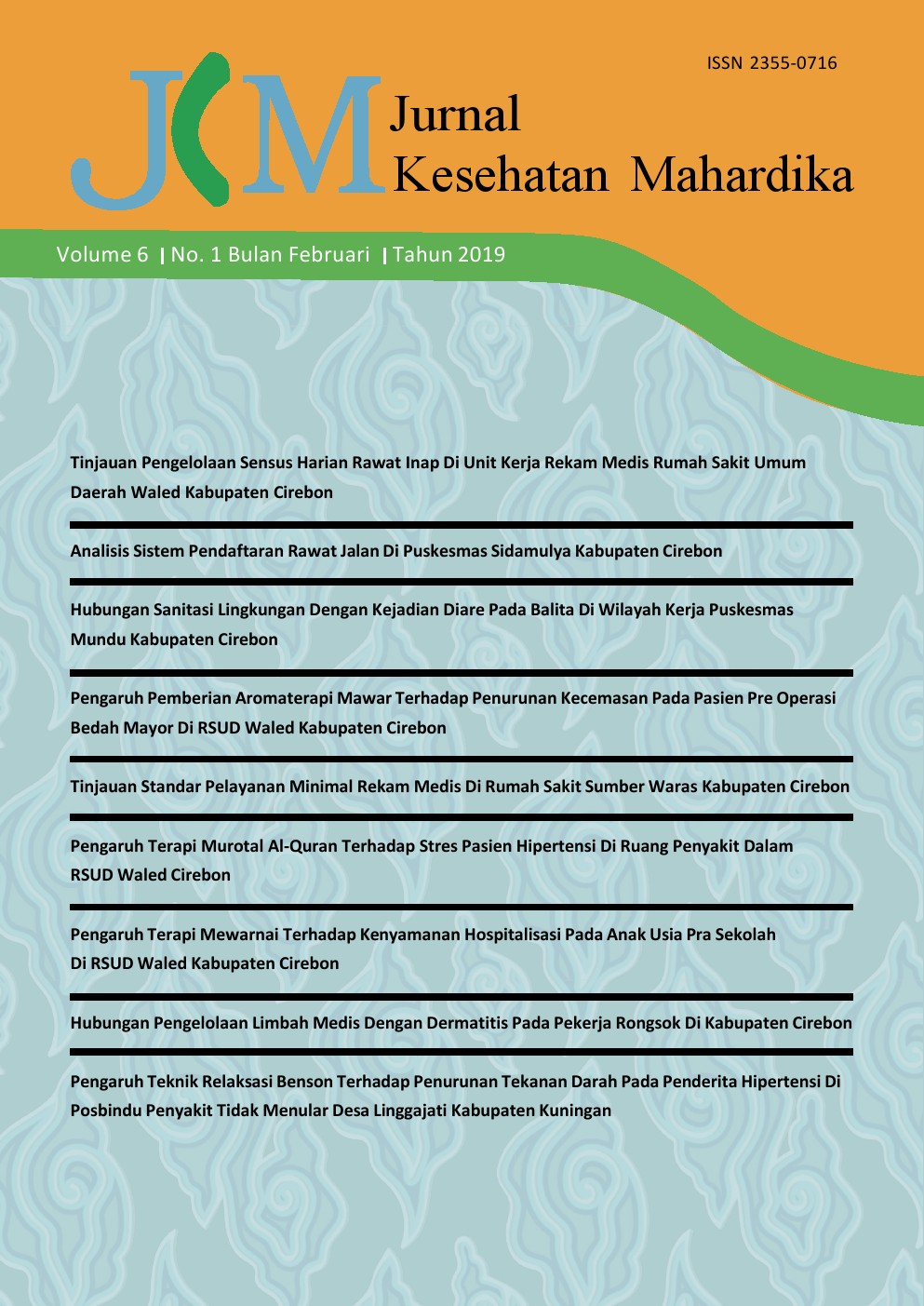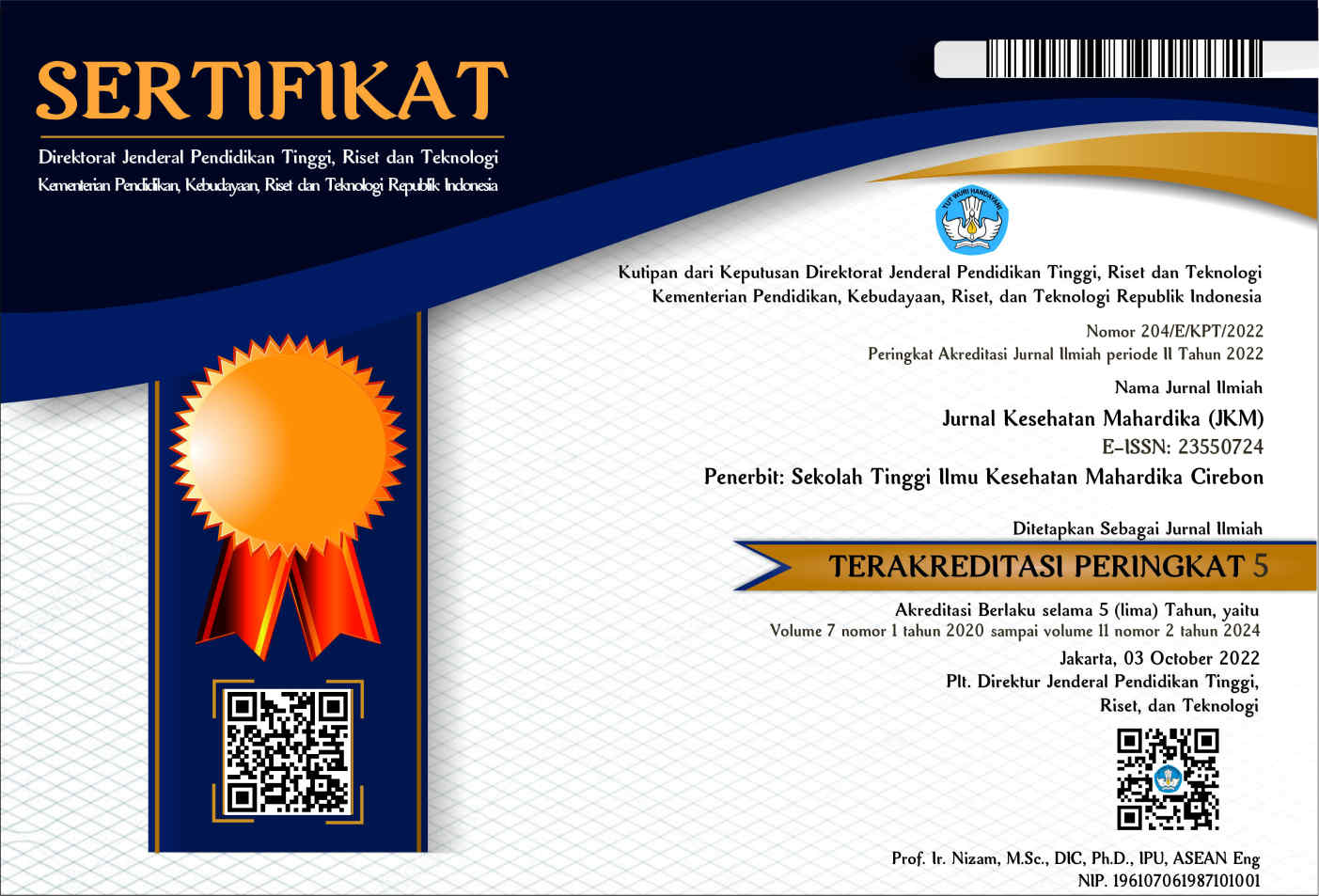THE RELATIONSHIP OF ENVIRONMENTAL SANITATION AND THE INCIDENCE OF DIARRHEA IN INFANTS
Abstract
Background: Diarrheal disease is still one of the major causes of morbidity and mortality. Almost all geographic regions of the world and all age groups attacked diarrhea, but severe disease with high mortality primarily found in infants and toddlers. Diarrheal disease is a disease that based environment. Several factors related to the incidence of diarrhea is inadequate water supply, water contaminated by feces, the lack of sanitation (excreta disposal unhygienic), personal hygiene and bad environmental, food preparation undercooked and storage of food cook at room temperature is not should.
Purpose: The purpose of this study was to investigate the relationship environmental sanitation with the incidence of diarrhea in infants.
Method: This research is in the form of observational survey with cross-sectional approach. The subject of this research houses who have children and reside in Puskesmas Mundu Cirebon. Total population of the house who have children and reside in Puskesmas Mundu Cirebon as many as 6021 children under five. the sampling is done using random sampling techniques Stratefied that the sample in this study, there are 98 people. Data collected from interviews using questionnaires and analyzed statistically using Chi square test significant level of p> 0.05 (95% confidence level).
Result: The result showed no relationship between drinking water, latrine ownership and type of floor of the house with the incidence of diarrhea in infants in Puskesmas Mundu Cirebon. There is no relationship between the physical quality of water with the incidence of diarrhea in infants in the work area of the health center mundu Cirebon Distric.













